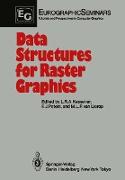- Start
- Data Structures for Raster Graphics
Data Structures for Raster Graphics
Angebote / Angebote:
Raster graphics differs from the more traditional vector or line graphics in the sense that images are not made up from line segments but from discrete elements orderly arranged in a two-dimensional rectangular region. There are two reasons for the growing popularity of raster graphics or bit-mapped displays: I) the possibilities they offer to show extremely realistic pictures 2) the dropping prices of those displays and associated processors and memories. With the rise of raster graphics, all kinds of new techniques, methods, algorithms and data representations are associated -such as ray tracing, raster operations, and quadtrees-bringing with them a lot of fruitful research. As stated above raster graphics allows to create extremely realistic (synthesized) pictures. There are important applications in such diverse areas as industrial deSign, flight Simulation, education, image processing and animation. Unfortunately many applications are hampered by the fact that with the present state of the art they reqUire an excessive amount of computing resources. Hence it is worthwhile to investigate methods and techniques which may be of help in redudng computer costs associated with raster graphics applications. Since the choice of data srtuc tures influences the efficiency of algorithms in a crudal way, a workshop was set up in order to bring together a (limited) number of experienced researchers to dis cuss this topic. The workshop was held from 24 to 28 June 1985 at Steensel, a tiny village in the neighbourhood of Eindhoven, the Netherlands.
Folgt in ca. 5 Arbeitstagen

